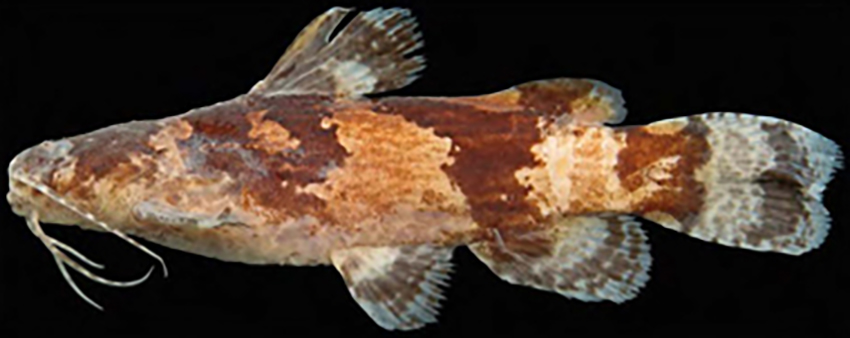not a species from Argentina:
Microglanis cottoides (Boulenger 1891)
published in:
Souza-Shibatta, L., J.F.R. Tonini, V.P. Abrahão, L.R. Jarduli, C. Oliveira, L.R. Malabarba, S.H. Sofia & O.A. Shibatta (2018):
Reappraisal of the systematics of Microglanis cottoides (Siluriformes, Pseudopimelodidae), a catfish from southern Brazil.
PLoS ONE 13 (7): e0199963. 20 p.
abstract (from publication):
The southern region of Brazil is characterized by high species diversity and endemism of freshwater fishes distributed across geographically isolated river basins. Microglanis cottoides has a widespread range across these river basins and occurs in sympatry with other endemic species of the genus (e.g. M. cibelae, M. eurystoma, and M. malabarbai). Herein we tested the monophyly of M. cottoides and presented for the first time information about the molecular phylogeny of species in the genus. The results suggest that M. cottoides currently forms a non-monophyletic group which includes populations endemic to the Uruguay River basin that are more closely related to M. malabarbai, and excludes M. cibelae, found to be nested within M. cottoides.
Based on an integrative approach using morphological and molecular data, we propose M. cibelae as a junior synonym of M. cottoides, and the populations of the Uruguay River basin previously assigned to M. cottoides in fact belong to M. malabarbai. Our molecular phylogeny shows that M. cottoides is sister to M. parahybae, which is also a coastal species, and M. malabarbai is sister of M. garavelloi, both endemic to inland river basins. The time-calibrated phylogeny indicates that the separation between inland and the coastal clades occurred in the Tertiary period, and that the species within the coastal basins diverged in the Pliocene, which overlaps with the diversification times estimated for the two inland species as well. This pattern of diversification corroborates some previous studies with other fishes from the same region.
remarks:
Based on the information contained in this publication we retrieve M. cottoides from the list of freshwater fishes from Argentina. Nevertheless, until no lot from an Argentinean locality has been examined and published, we do not follow yet the idea of these authors to assign the existing lots from the Uruguay basin to M. malabarbai.

